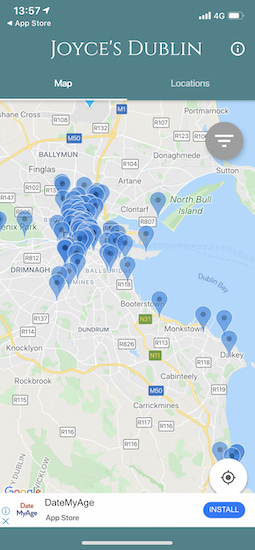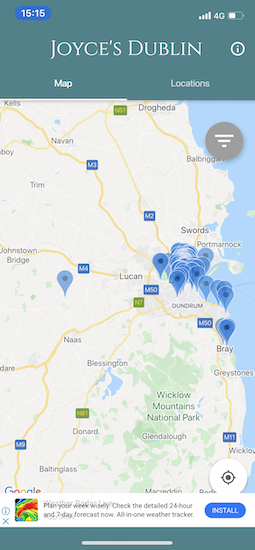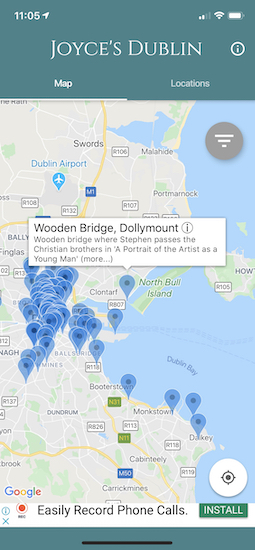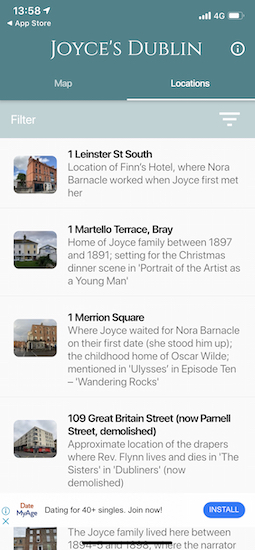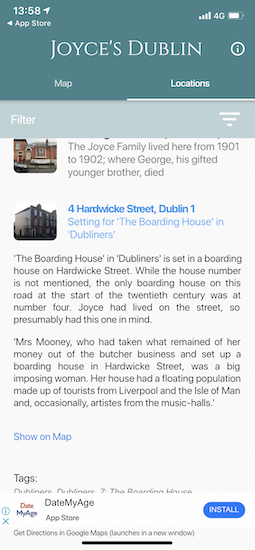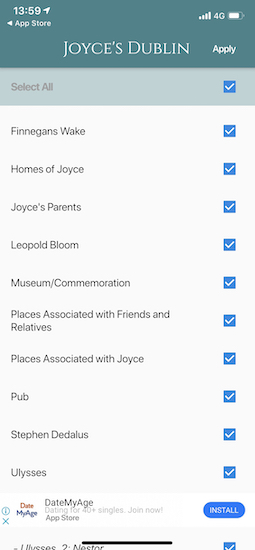|
|
Joyce's Dublin: A Walk Round Dublin Following James Joyce and his Characters (edit - spelling)By Graham K. Rogers
This year with travel restricted, there is a virtual tour of Bloom's Dublin by way of Joyce's Dublin: a free app available on iOS and Android developed by Sean O'Connor. Although the original release date was several months ago, it was highlighted in The Irish Independent this week, to give people another way to connect with the event. When first started, a black and white photograph appears for a second or so and then a screen with a map is loaded. That initial image is of an equestrian statue, which might be that of Field Marshal Hugh Viscount Gough. The image appears too briefly for a screen shot. Almost immediately a Google Maps screen appears with locations relevant to Ulysses, Finnegan's Wake, The Dubliners, and to Joyce and his family. As it uses Google Maps, the screens can be expanded or made smaller using two fingers. Although most location flags are close to Dublin, Clongowe's Wood College is some way out (20 miles/32Kms) and might be missed in the default display.
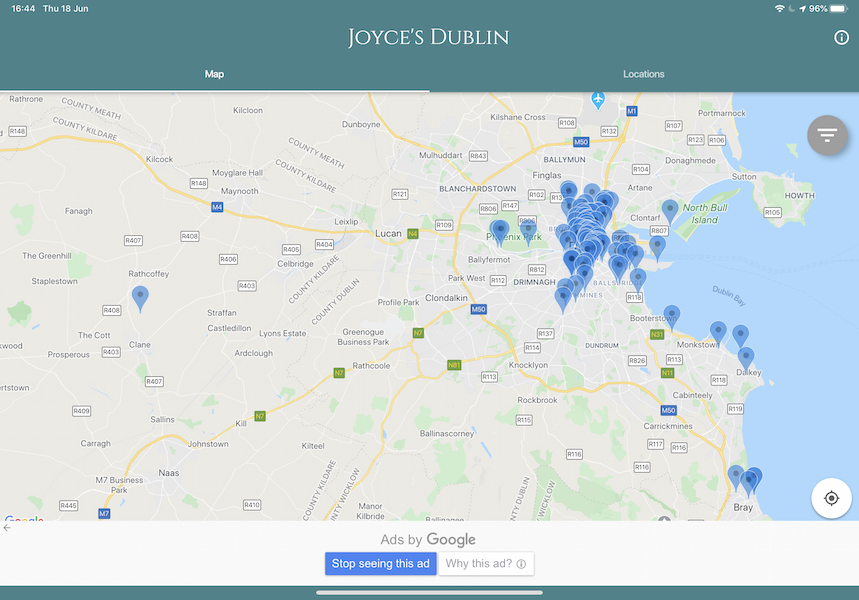 Joyce's Dublin on iPad - Map display shifted right to show Clongowe's Wood College
The app allows anyone interested to take an easy armchair trip of the places that are significant to the examination of Joyce and his work. As well as those traveling to Dublin, who could use this as a simple planner, students and anyone interested in the author and the works, could also glean knowledge using this app. Being a free download, advertisements appear at the bottom of the screen. I did not find this unwelcome or obtrusive. Searching for Joyce's Dublin on the App Store also revealed other related apps (free and paid) that have related information.
Graham K. Rogers teaches at the Faculty of Engineering, Mahidol University in Thailand. He wrote in the Bangkok Post, Database supplement on IT subjects. For the last seven years of Database he wrote a column on Apple and Macs. After 3 years writing a column in the Life supplement, he is now no longer associated with the Bangkok Post. He can be followed on Twitter (@extensions_th) |
|

